Everton were having a good run of form in the Premier League prior to this match, especially at home. They were unbeaten at the Goodison Park since the start of last month, including a goalless draw against their main rivals Liverpool, and a convincing win against Chelsea. Not only that, but they were also able to defeat West Ham away from home to finish March with high hopes. Their only bad result last month was a hard-fought 3–2 loss against Newcastle, who scored twice in the last 10 minutes.
In the opposite side, Arsenal were also in a good mood. They had won their last three matches against Manchester United, Rennes, and Newcastle. In those matches, they scored a grand total of seven goals and conceded none. As the only side in the Premier League without any clean sheets as a visiting team, those results gave the Gunners a good amount of confidence ahead of the match.
Positive vibes on both teams gave the game a high level of intensity and entertainment even before the whistle was blown. This match successfully met the expectations in terms of intensity, but not so much when it came to entertainment. Goalscoring chances were everywhere, especially for Everton, but the game ended with just one goal. This tactical analysis will tell you how Marco Silva outsmarted Unai Emery with his tactics and eventually secured an important win for his side.
Lineups
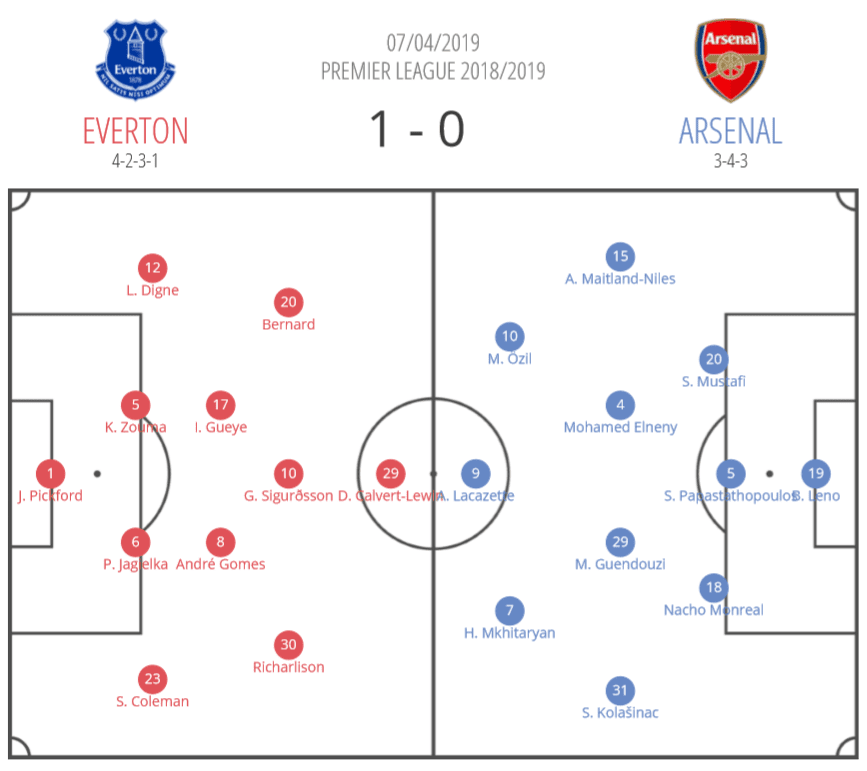
Silva chose 4–2–3–1 for his team. He picked veteran Phil Jagielka to play alongside Kurt Zouma in the heart of the defence. The duo of Idrissa Gana Gueye and Barcelona loanee Andre Gomes provided solidity as double pivots in the engine room. In front of them, the trio of Bernard, Gylfi Sigurðsson, and Richarlison were tasked with giving attacking support to the target-man, Dominic Calvert-Lewin. The bench was filled by the likes of Leighton Baines, Theo Walcott, and Ademola Lookman.
Meanwhile, Emery opted for a 3–4–3 for his side. Shkodran Mustafi, Sokratis Papastathopoulos, and Nacho Monreal were picked to form Emery’s back three. Alexandre Lacazette was Arsenal’s only striker, supported by former Man. United player Henrikh Mkhitaryan and Mesut Özil, the latter being given the captaincy for this game. Names like Aaron Ramsey, Alex Iwobi, and Pierre-Emerick Aubameyang had to start the game from the dugout.
One from the training ground
Jagielka scored the only goal in this game with a close-range finish inside 10 minutes. In fact, his last league goal came two years ago, in a relatively similar unique fashion. To be fair, the main reason for their goal was the well-worked throw-in routine they deployed.
Digne was the ball thrower due to his special ability. Inside the box, there were five Everton players that split into two groups. The first group consisted of Jagielka and Zouma, who were placed at the near post. The second group consisted of Richarlison, Gomes, and Calvert-Lewin, who were waiting at the central part of the penalty box.
Jagielka and Zouma were positioned at the near post due to their physical strength. Their objective was to win the ball from Digne’s long throw and then head it into one of the three attackers of the opposite group. Jagielka did his job brilliantly by beating three Arsenal players in the process: Mustafi, Matteo Guendouzi, and Mohamed Elneny.
Arsenal seemed unaware with Everton’s set-up. They only placed two players, Sead Kolasinac and Mkhitaryan, to face Everton’s three. They were numerically inferior in this very important part, not to mention their qualitative inferiority at the near post.
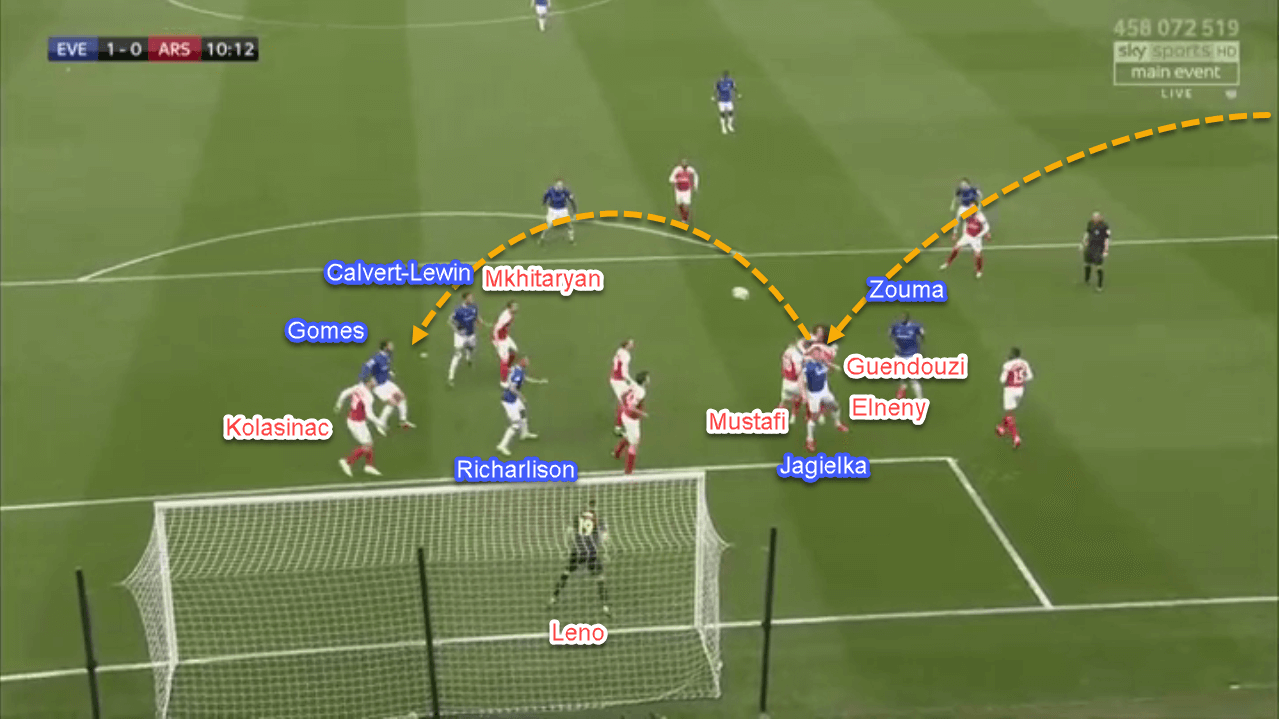
Everton’s plan almost worked brilliantly because Calvert-Lewin and Richarlison attacked the ball with ease, but the ball didn’t meet the back of the net. Somehow, it landed on Kolasinac’s right foot and deflected back into Jagielka’s path. He made no mistake to give Everton the lead.
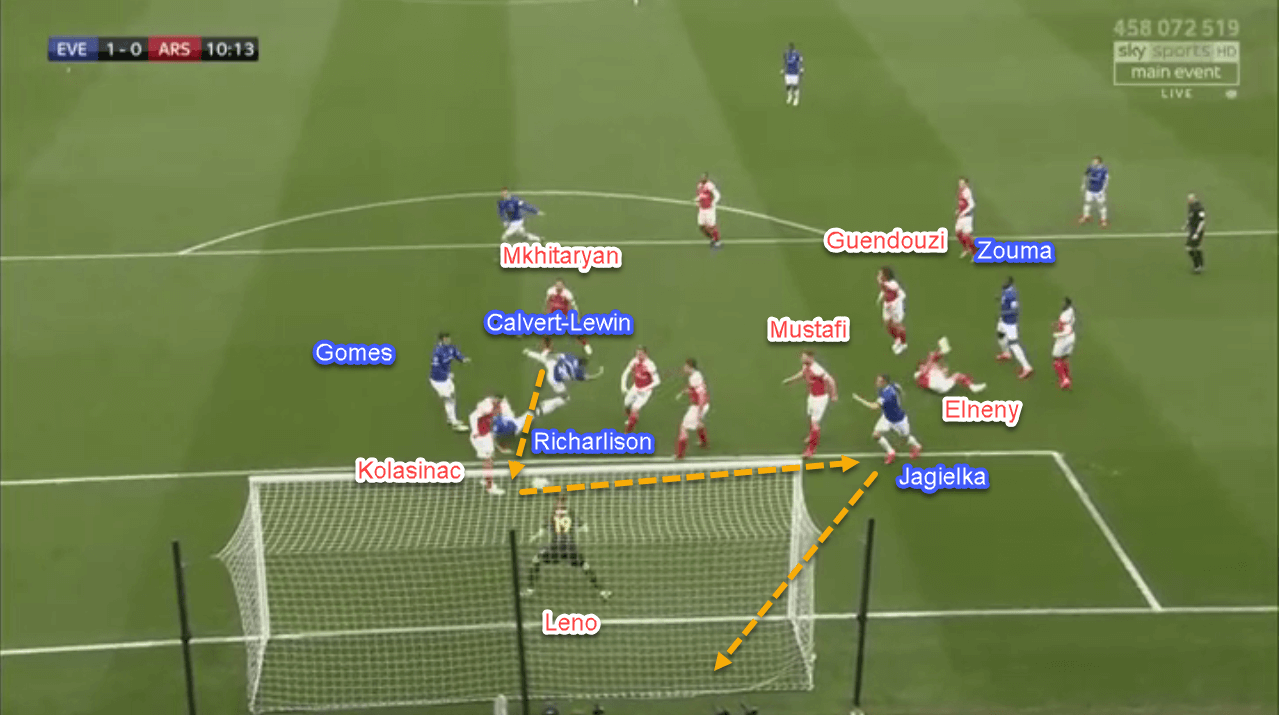
Teamwork makes the dream work
Silva set his team up in a mid-block 4–4–2 when they didn’t have the ball. This approach worked brilliantly because they managed to nullify Arsenal’s creativity to almost nothing in the first half. In the 4–4–2 Everton aimed to close the central passing lanes, preventing Elneny and Guendouzi from receiving the ball and thus limiting Arsenal’s forward distribution.
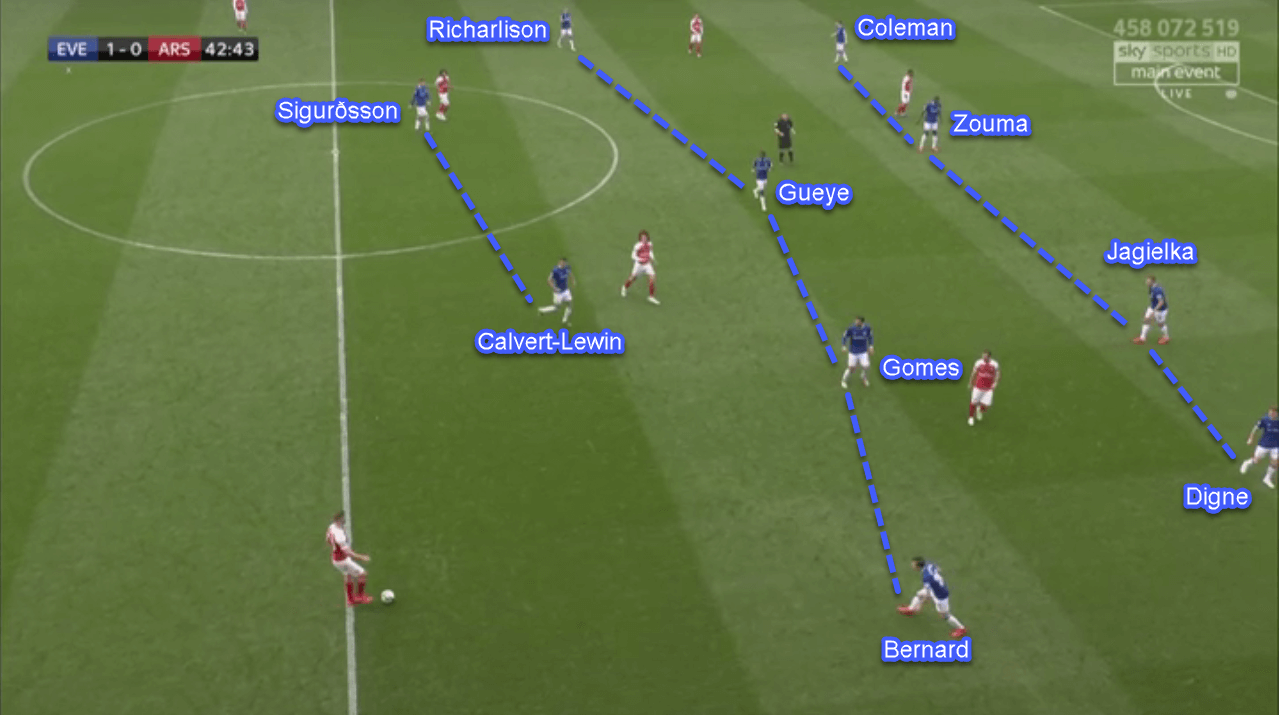
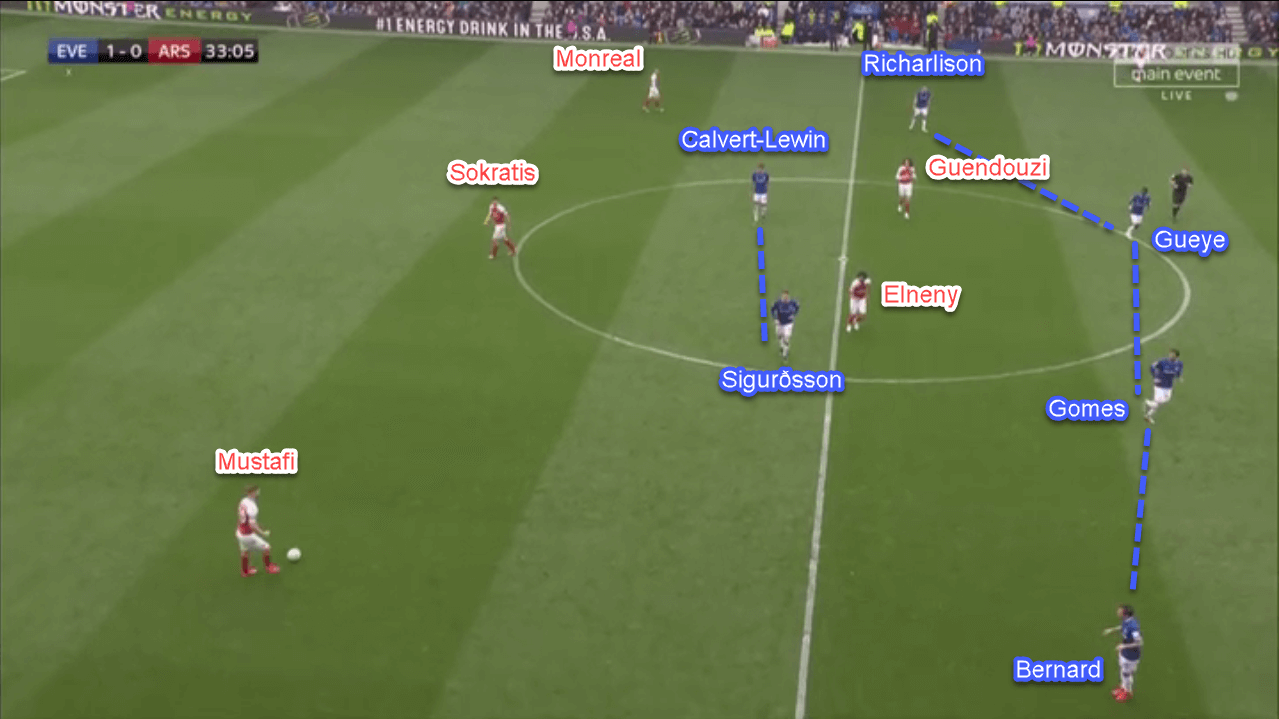
Positionally speaking, Arsenal were not very good either. Their wing-backs were too high at times, making them inaccessible, not to mention the smartness of Everton’s wingers to close passing lanes to both Kolasinac and Ainsley Maitland-Niles.
Arsenal then were forced to play over-the-top balls behind Everton’s line in order to reach Lacazette in the final third. They would try to exploit Jagielka’s lack of pace by putting the ball behind him in the process. Unluckily for the away side, this approach didn’t work as they expected.
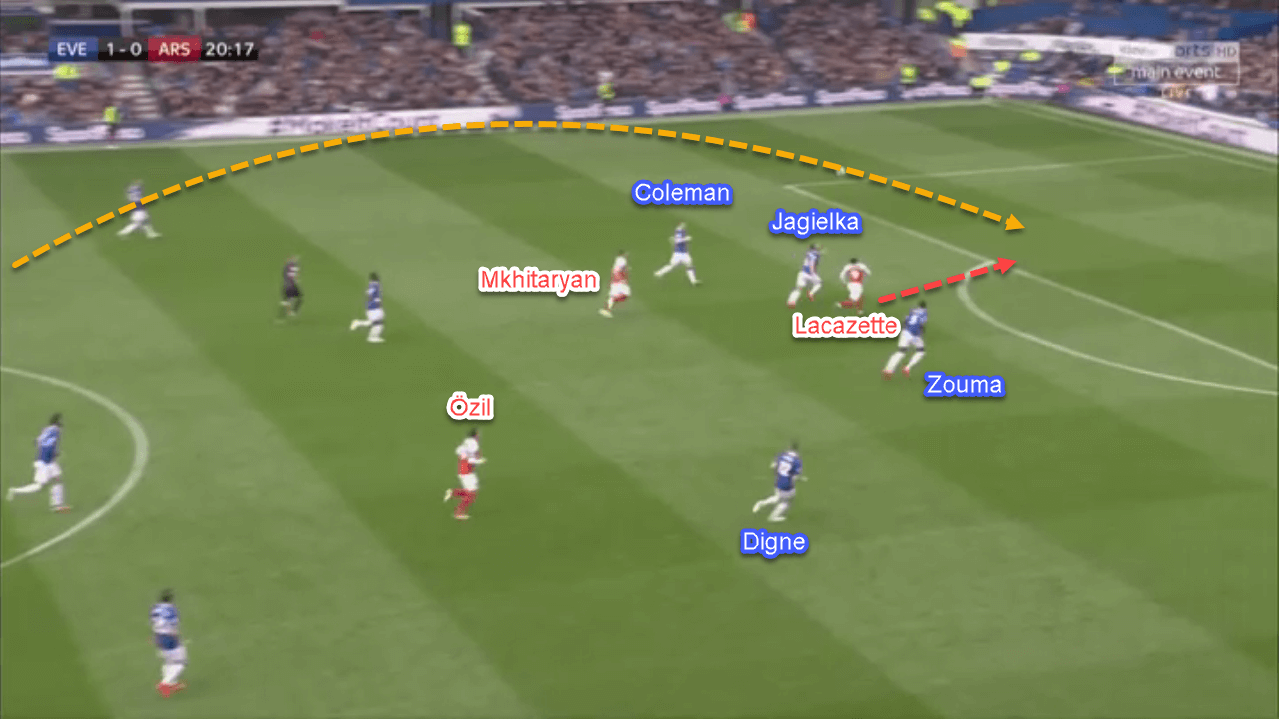
Sometimes Özil also dropped next to the midfielders to help with the buildup. His dropping movements would trigger one of the Everton midfielders (usually Gueye) to follow him, thus opening space for Arsenal to exploit in the advanced area. Sadly, that didn’t happen very often in the first half. Silva’s side successfully reduced the Gunners’ threat with their diligent work.
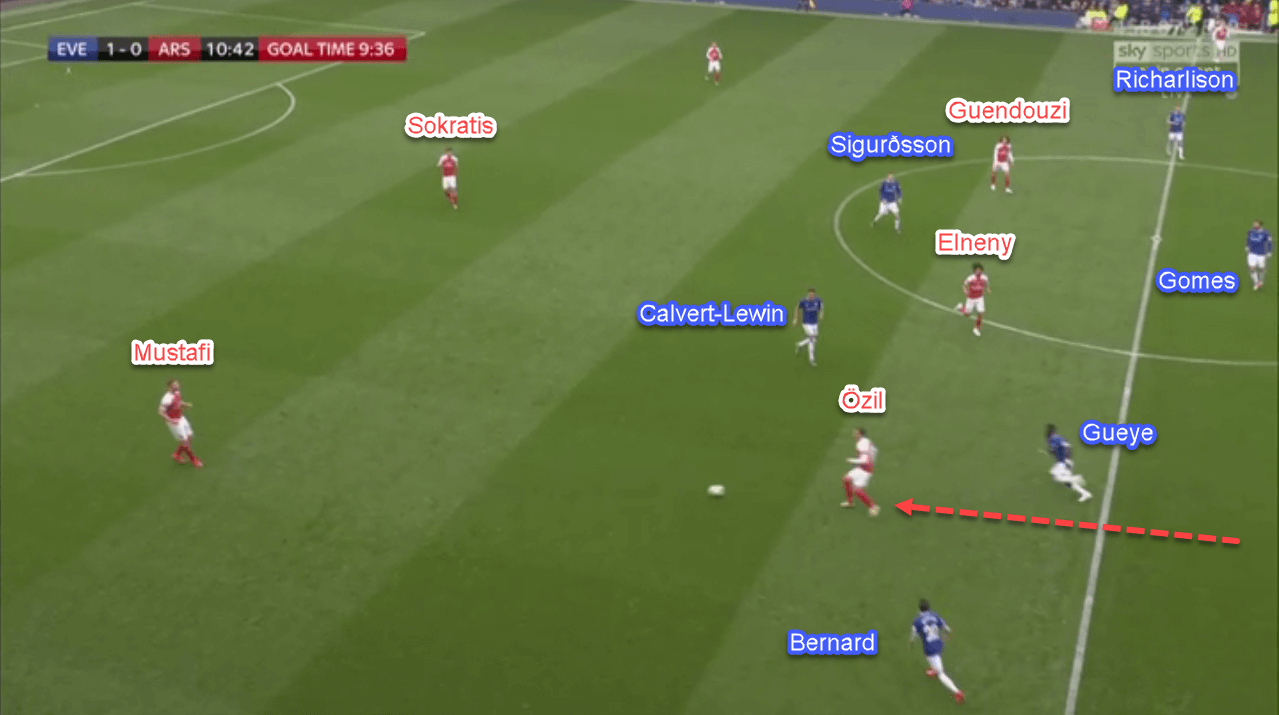
Arsenal’s proactive defence
When his team didn’t have the ball, Emery would set his team in a narrow 5–4–1/5–2–2–1 shape. Similar to Everton’s defensive objective, Arsenal used that shape to prevent the ball from reaching Gueye or Gomes in the middle of the park. Even though with that shape they gave more space and time for Everton’s midfielders to receive, Elneny and Guendouzi were always ready to press the home side’s midfielder when needed.
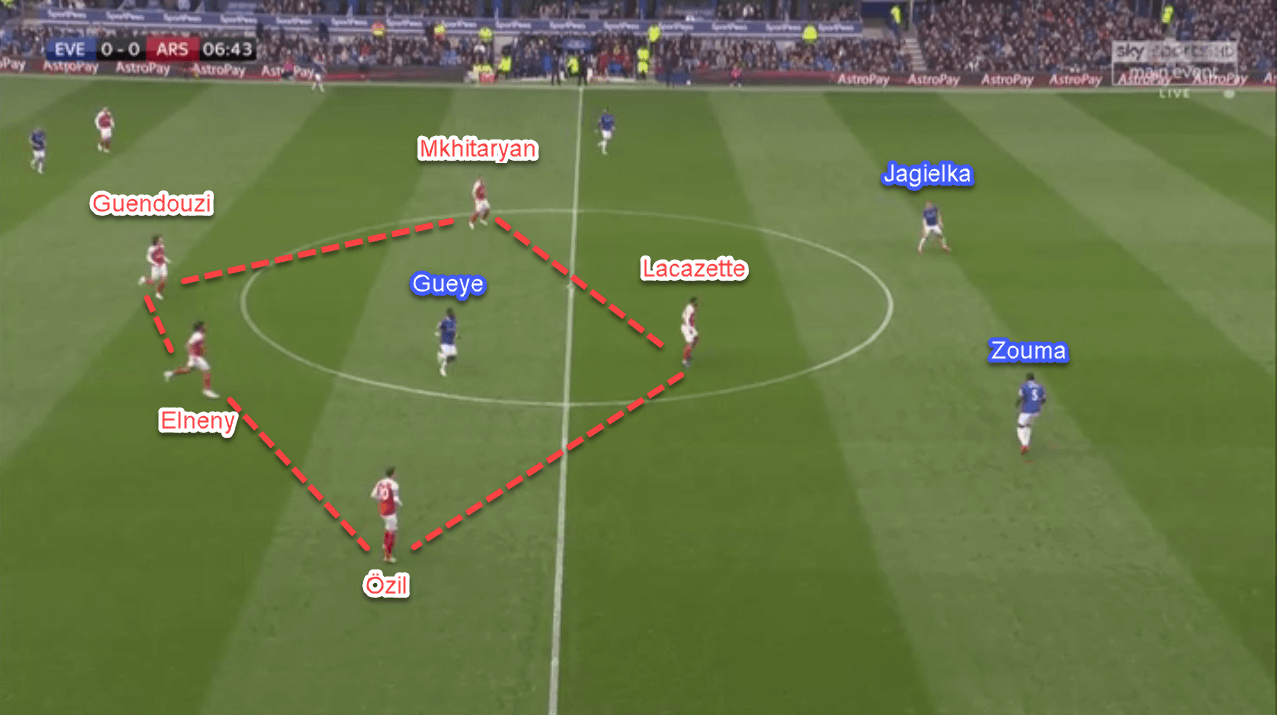
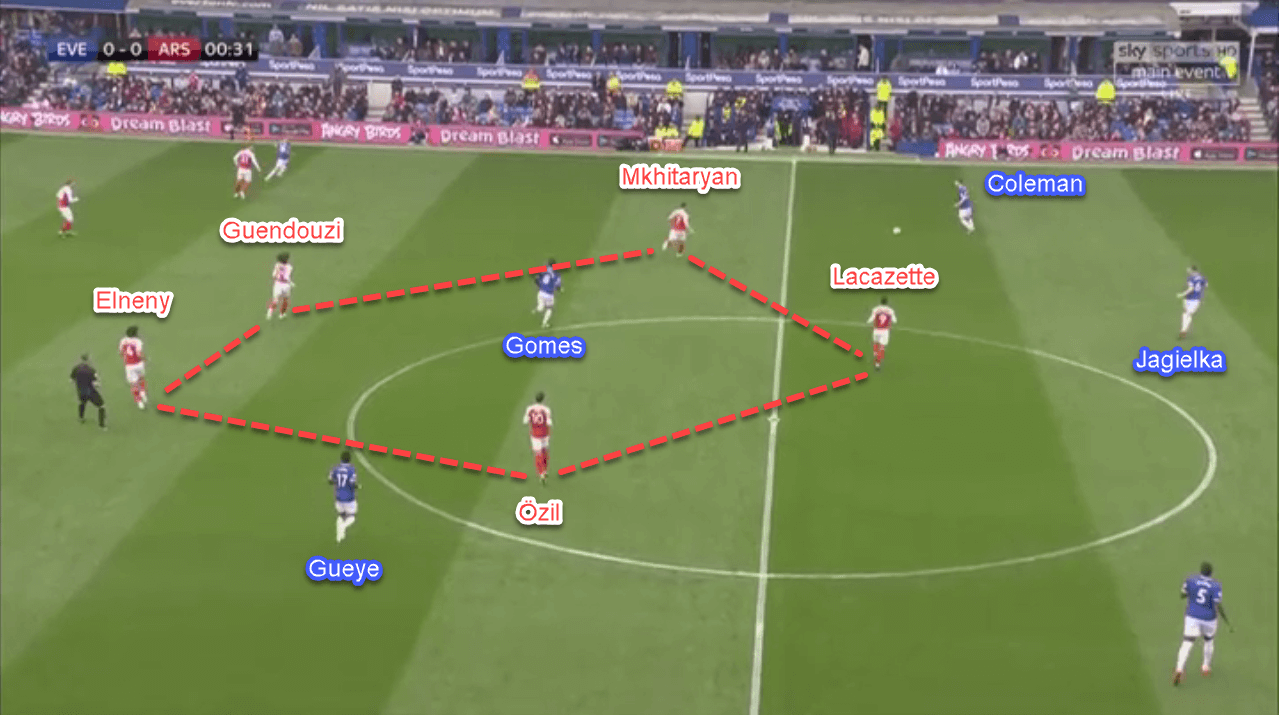
Everton tried to defeat this shape by drifting one of their midfielders (mainly Gueye) to the half-space. By doing that, they hoped to stretch Arsenal’s midfield line thus enabling them to play through the middle. However, this approach had a negative side of adding an unnecessary distance between the midfield duo. On top of that, Sigurðsson didn’t offer any dropping movements to help them.
Emery’s midfield line kept their compactness even though Gomes actively drifted away from Gueye. This worked quite effectively because Arsenal were able to outnumber Everton in the middle of the pitch. More than that, additional distance equals additional risk, allowing Arsenal’s midfielders to intercept the ball more easily. The away side managed to create a counter-attack attempt through this approach.
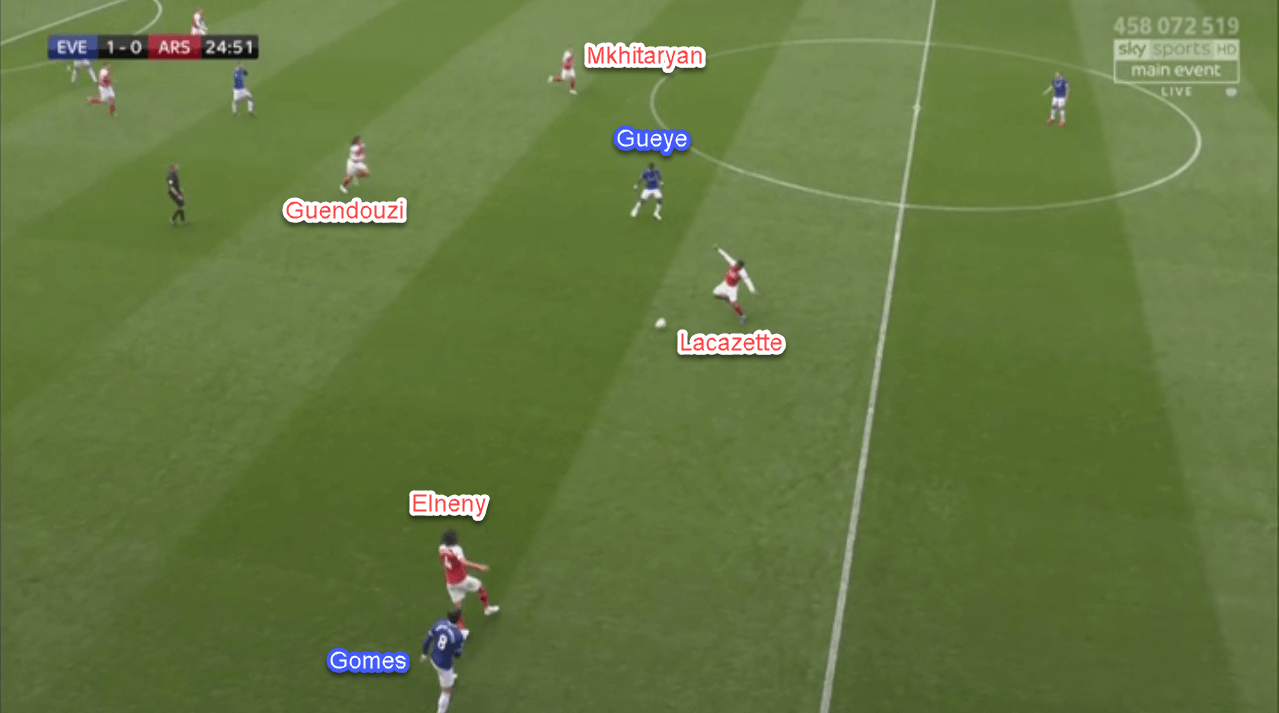
Everton’s various attacking approaches
Everton put in a very interesting attacking performance in this game. First, they would try to exploit the space behind Kolasinac. In this match, Kolasinac was positioned high; that means he often abandoned his defensive duty.
Everton tried to exploit the space he left by finding Richarlison in that area with diagonal balls from the left half-space. On top of that, Calvert-Lewin did a fantastic job to pin both Monreal and Sokratis with him so they couldn’t track Richarlison freely.
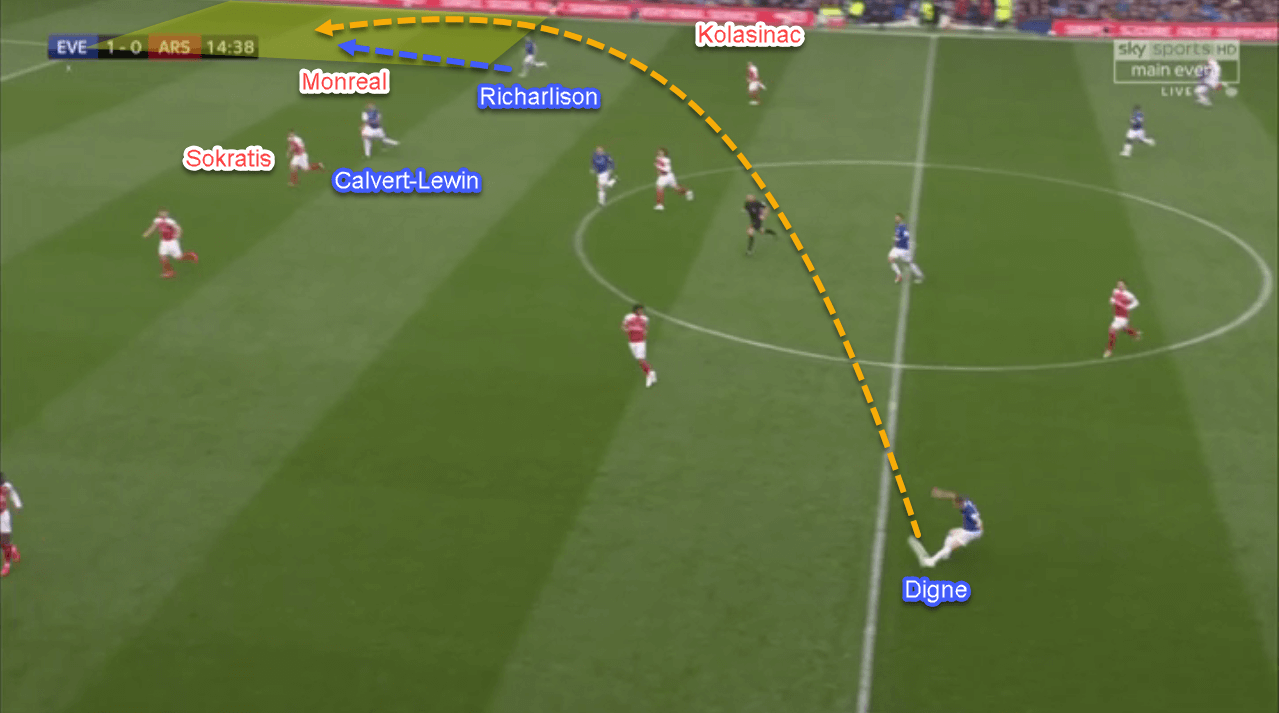
Secondly, they would try to overload the left-hand side with three to four players. Digne and Bernard were supported by Sigurðsson and Gomes, who liked to drift to the left half-space. Their objective was to pull Maitland-Niles out of his position with short combinations. By doing that, they opened a space for either Bernard or Digne to run into.
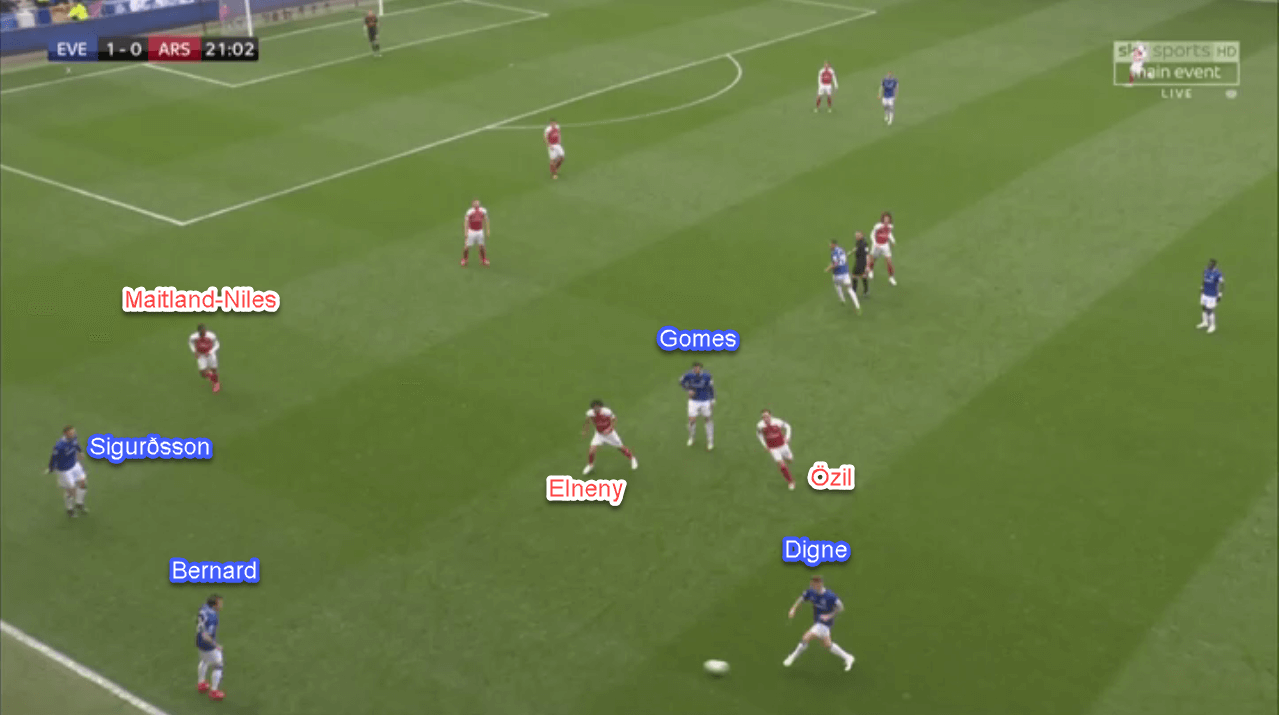
Thirdly, they utilised Jordan Pickford’s supreme kicking ability to bring the ball forward. His target was Calvert-Lewin, whose great strength helped him win physical duels against Arsenal’s defenders. Calvert-Lewin was positioned in the right half-space to win long balls from Pickford.
Silva put him there because in that area he would only have to face Monreal, thus giving the Englishman a physical superiority. Not only against Monreal but Calvert-Lewin also excelled when he had to face Sokratis. He was truly a nightmare for Arsenal’s defence. After receiving, Calvert-Lewin laid the ball off to Richarlison, who could often be found free on the right flank.
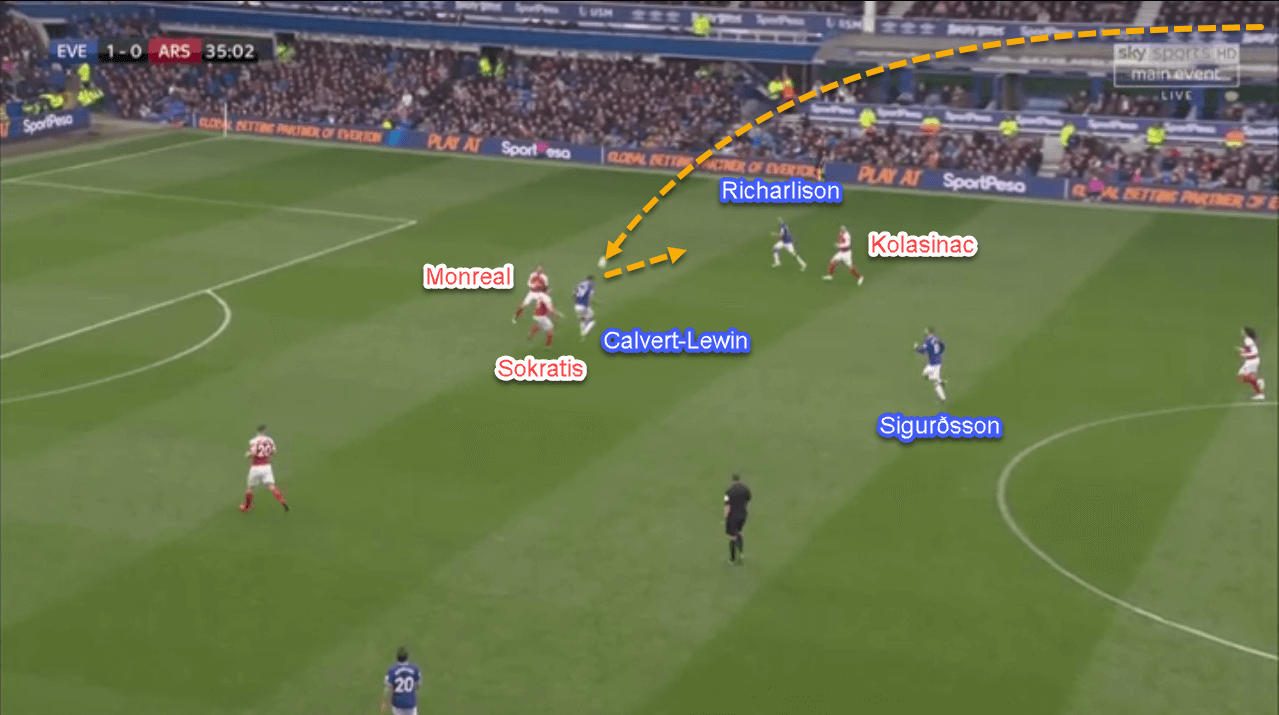
Arsenal’s adjustments
Knowing his side had played awfully in the opening 45 minutes, Emery went bold coming into the second half. He subbed Kolasinac and Elneny off for Aubameyang and Ramsey. By doing that, Emery shifted his team’s shape to a more attacking 4–2–3–1.
Ramsey proved that he’s too worthy to be benched with his great performance after coming on. The future Juventus player provided so many aggressive runs from the second line, practically making Arsenal play 4–1–4–1 instead of 4–2–3–1. The Welshman was not shy to run into the box to receive crosses or create chances for himself.
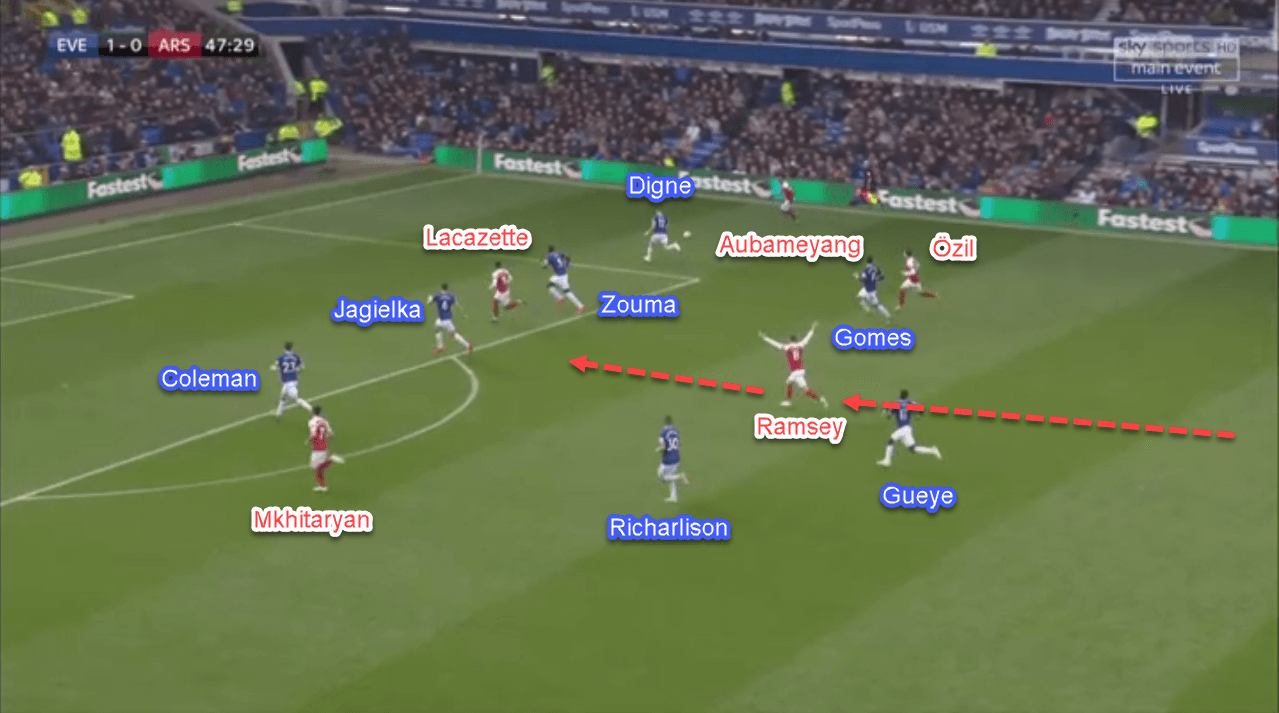
Ramsey’s aggression added more threat for Arsenal, thus forcing Everton’s defensive line to sit deeper. Everton didn’t react well to this. Their midfield line didn’t follow to move deeper. This uncoordinated defending gave Arsenal space to play between the lines so many times in the second half.
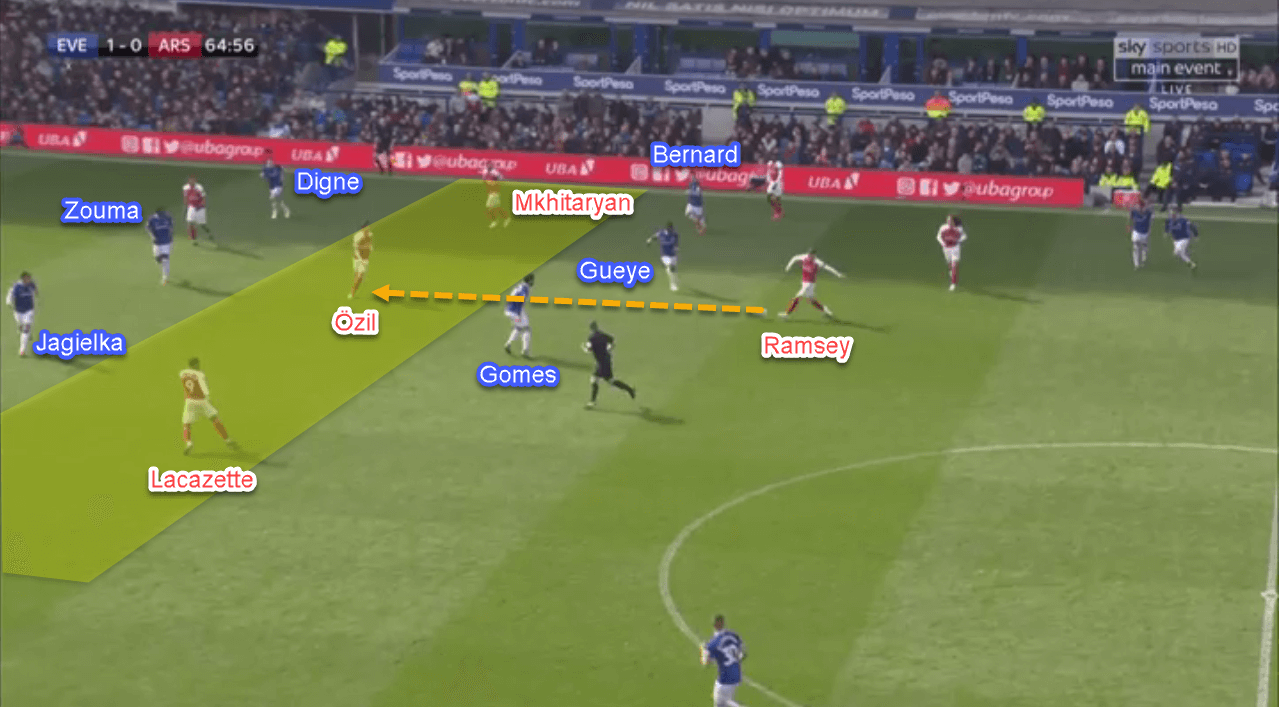
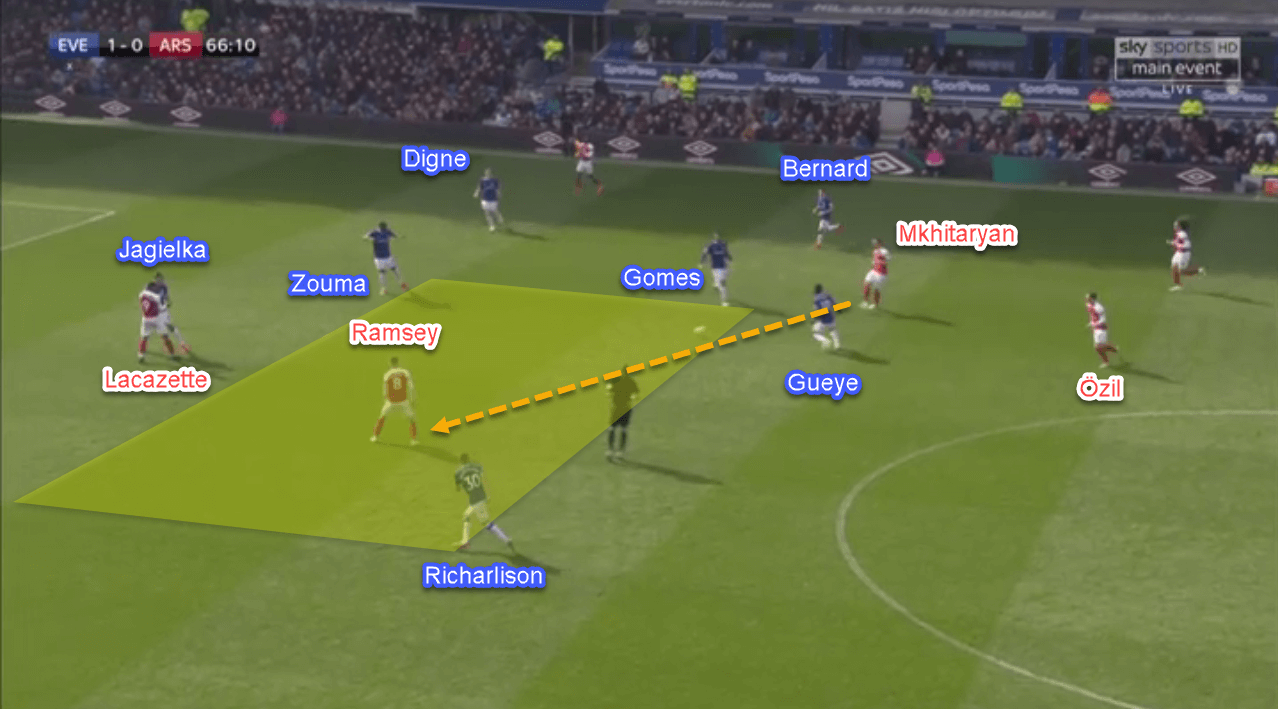
When they did play in 4–2–3–1, Emery asked his attacking midfielders to stay narrow and close to each other. The width was then provided by both full-backs, Maitland-Niles and Monreal. The narrow positioning was deployed due to the trio’s tendency to interchange positions and their great ability to play in tight spaces, either by dribbling or by making combinations.
Ineffective Everton
Arsenal enjoyed a lion share of ball possession in the second half and that made Everton sit deeper. But Arsenal’s poor defensive structure allowed so much space for Everton to exploit in transitions, especially down Everton’s right-hand side.
Coleman, Richarlison, and later Walcott enjoyed this a lot, especially in the last 20 minutes. There were so many occasions when Monreal and Aubameyang, or later Iwobi, were late to track back and give Everton some goalscoring opportunities.
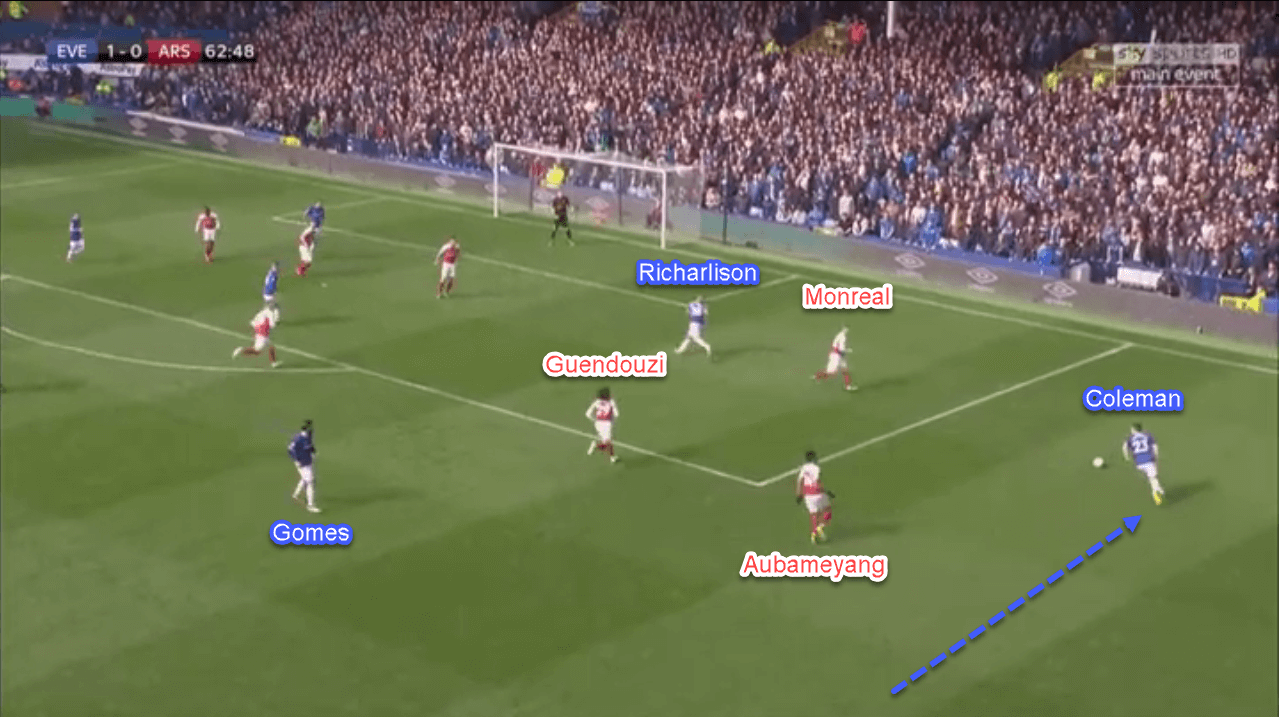
Everton’s main issue was their ineffectiveness in the final third. There were some aspects leading to that. Firstly, there was their lack of quality in decision-making. There were times when the player in possession was late to make a key pass or cross, or even worse make a totally wrong decision. One of the examples was Calvert-Lewin’s highly questionable choice in the image below.
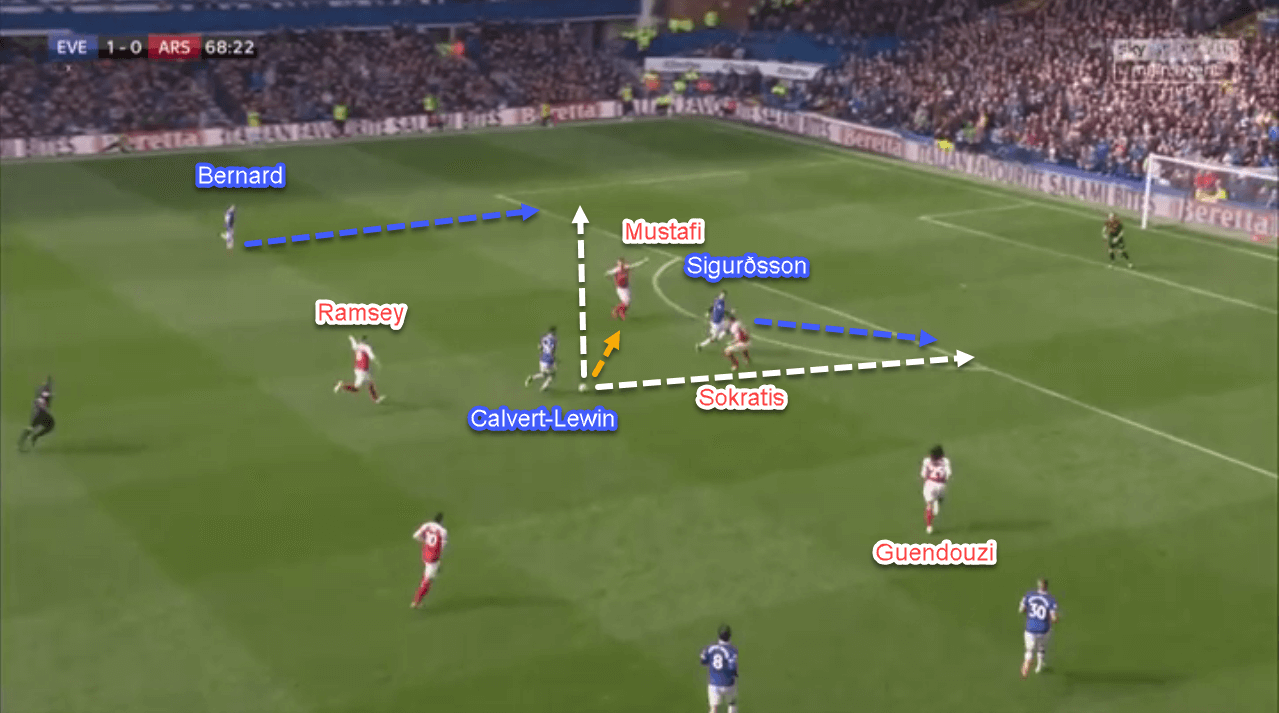
Secondly, they were just really bad in front of the goal. On one occassion, Maitland-Niles made an error that led to a one-on-one situation between Bernard and Bernd Leno, but the Brazilian was unable to control the ball properly and Leno saved. Another example was Richarlison’s howler after a nice transitional move from Sigurðsson.
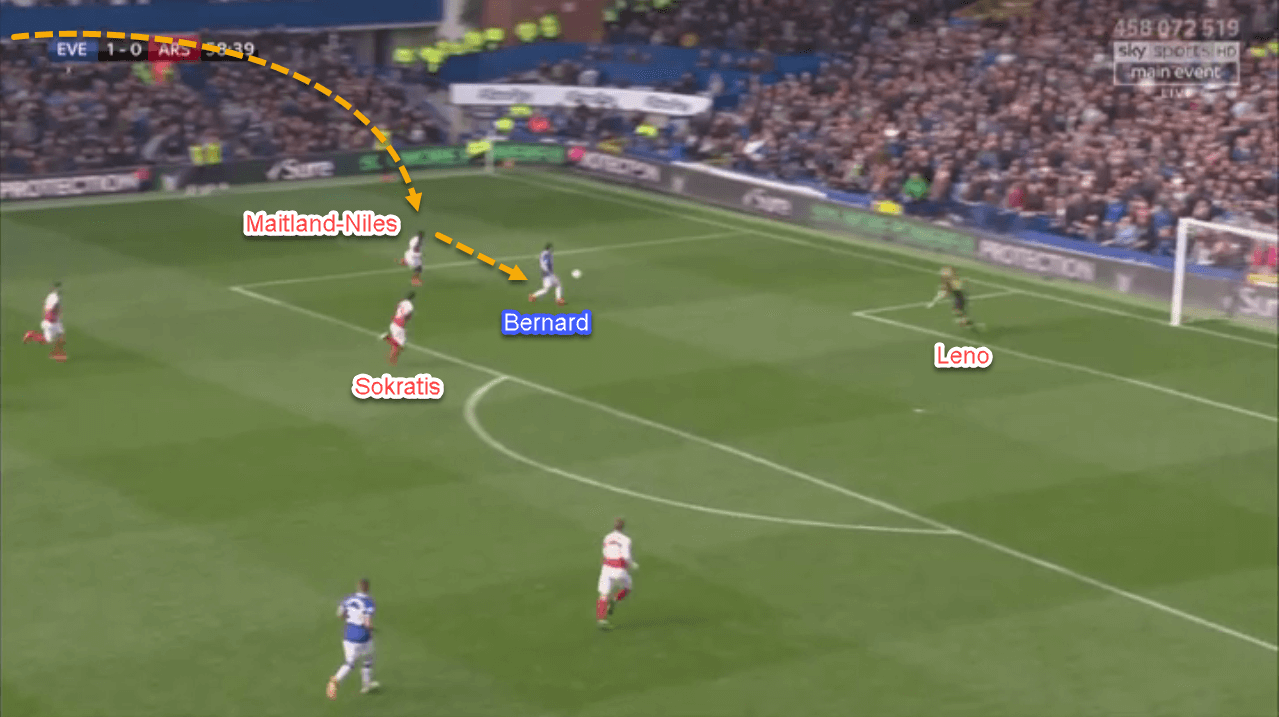
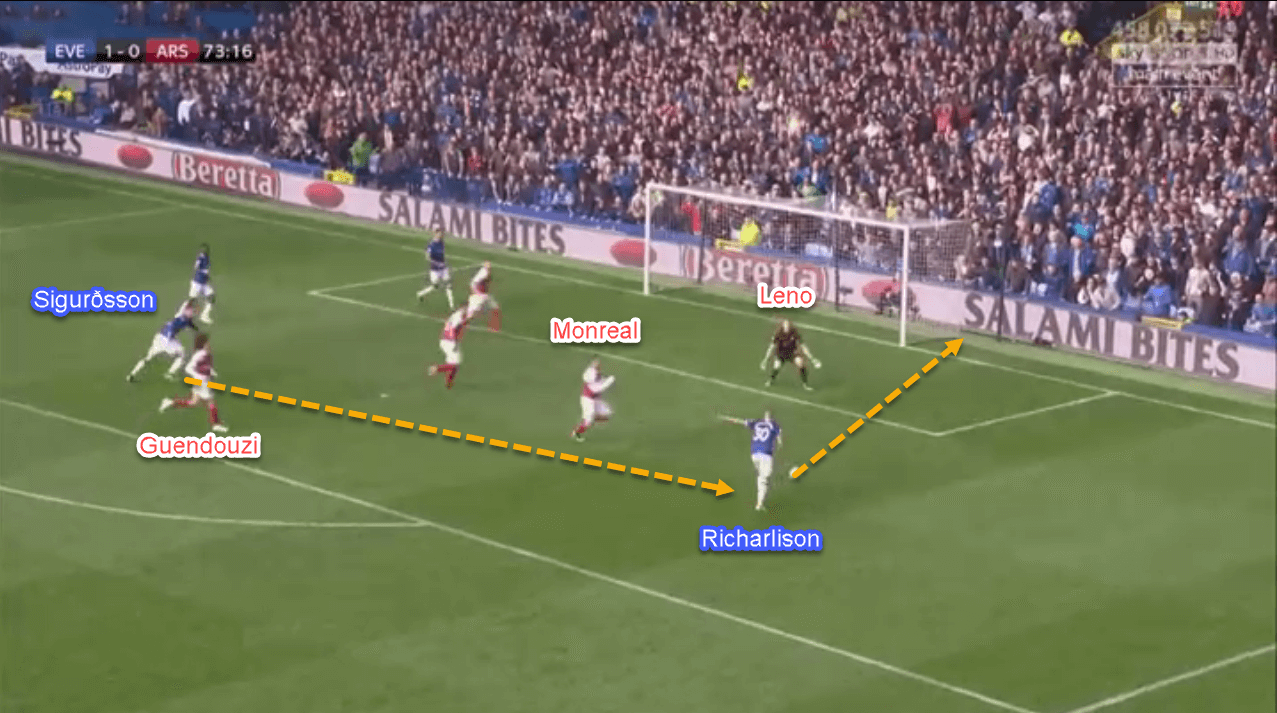
Conclusion
From Arsenal’s perspective, this defeat dents their dream of finishing in the top four even more. For Everton, this win allowed them to close their gap to Leicester City and Wolverhampton and boost their chances of clinching a Europa League qualifying spot, assuming Manchester City win the FA Cup.
According to Opta, Everton had an xG value of 2.4 compared to Arsenal’s 0.4, and yet were only able to score one goal. Tactically speaking, Silva outsmarted Emery by making his team control this high-intensity match from start to finish. Superb defensive work and a creative attacking display were the reasons behind it, making a 1–0 win seem unjustifiable for the Toffees.
Nothing but the best is good enough, Emery.
If you love tactical analysis, then you’ll love the digital magazines from totalfootballanalysis.com – a guaranteed 100+ pages of pure tactical analysis covering topics from the Premier League, Serie A, La Liga, Bundesliga and many, many more. Pre-order your copy of the April issue for just ₤4.99 here, or even better sign up for a ₤50 annual membership (12 monthly issues plus the annual review) right here.

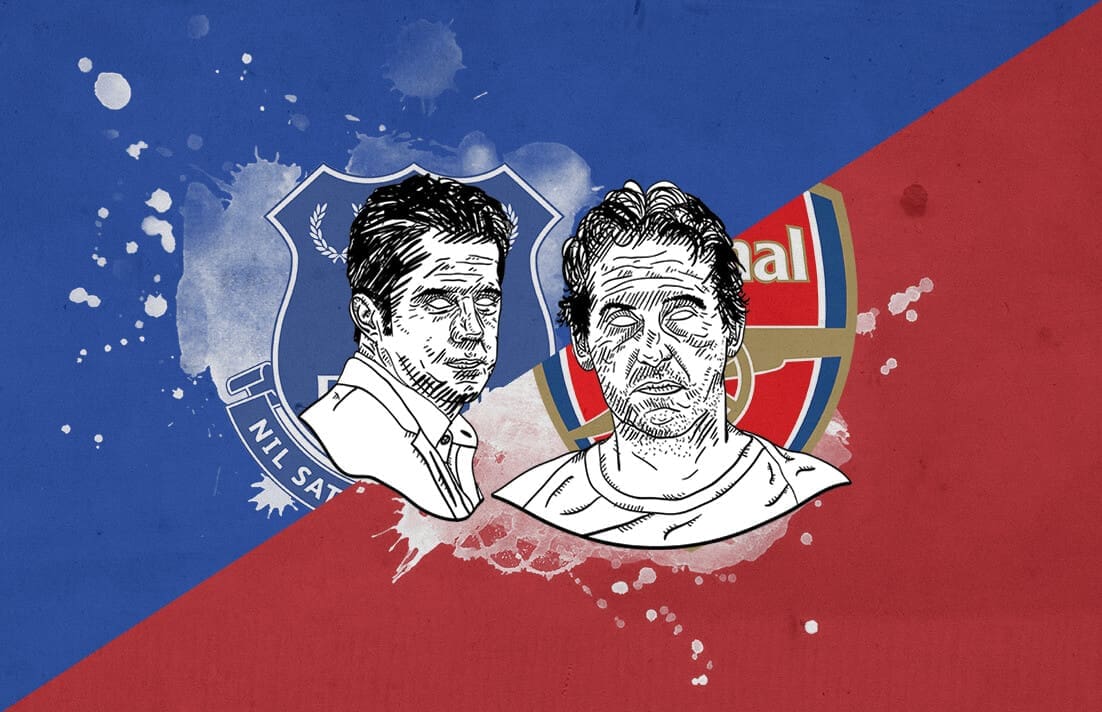



Comments